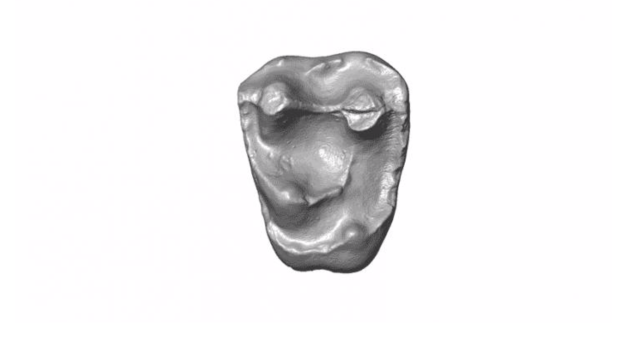In a single tooth, scientists might have discovered the smallest fossil monkey as well as an important piece of primate evolutionary history.
Today, there are 16 monkey species in the Amazon, but there’s a dearth of information in the fossil record explaining how these species came to be. That makes any fossil evidence important, no matter how small.
“It’s an exceptionally rare thing to find any fossil remains of monkeys from the Amazon,” Richard Kay, the study’s first author and Duke University evolutionary anthropology professor, told Gizmodo.
Finding fossils in this area is a bit like panning for gold. The researchers took trips to outcrops of sedimentary rock beside rivers in Peru, where fossils have been found lodged in the sand, silt, and clay. They mix the rock with water and detergent and pass the mixture through screens, hoping to find something significant.
This time around, they found a complete and nearly unworn upper molar, half the size of a BB, in rock dating back 17 million to 19 million years ago.
Kay explained that in living primates, tooth size correlates well with body size, and based on their analysis, this monkey would have been around 230 to 240 grams, a little more than half a pound. According to Kay, this animal would have fit inside a teacup. This is the smallest monkey fossil yet discovered, but it’s still much larger than the smallest living monkey, the pygmy marmoset.
There’s not much you can say about one tooth besides guessing at where it came from, but the researchers gathered that the specimen’s owner ate fruit and insects.
They named the species Parvimico materdei, after the Río Alto Madre de Dios, the river by which it was found, and published their results in the Journal of Human Evolution.
Kay told Gizmodo that he knew it might seem silly to make such a big deal out of a single tooth, but that specimens like these are “really rare.” The fossil record is lacking from this especially important time period, during which scientists think many of these South American monkeys evolved.
We have to be careful not to speculate too much from a single tooth, but in the meantime, researchers have already uncovered other fossils from this expedition, and there’s a group working at the site right now, hoping to uncover more about the ancient South American monkeys.
